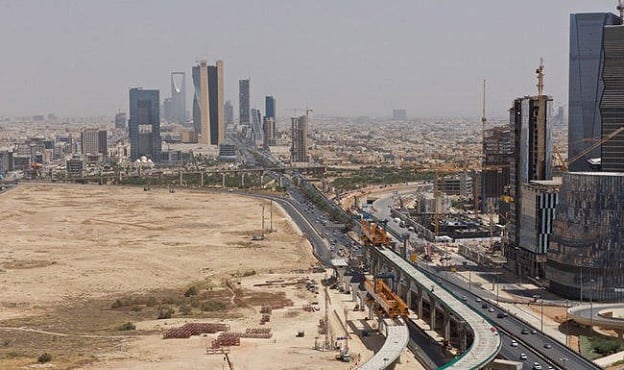China knows that it has an air pollution problem. There's heavy dependence on coal and fossil fuels, lessexperience with environmental remediation, and a fast-growingindustrial sector. Air quality problems were brought sharplyto global attention by the 2008 Olympics in Beijing; theirnational and local governments have been grappling vigorously withcarbon cost and air pollution issues ever since. They're still struggling. Recently I led a trade missionfor the Los Angeles County Economic Development Corp., and spenttwo weeks in-country. Air quality was often tough; Iwas particularly struck by the persistence of smog in some parts ofthe countryside. We rode through the rural but relatively industrialized North,85 miles (136 km) from Beijing to Tianjin: about 2 hours bycar or 30 minutes by the new bullet train). This is Hebeiprovince, site of a major Chinese victory in the "Boxer Rebellion"a hundred years ago. Now, it has modern roads winding through many green fields,most lined with trees in an enormous reforestation effort. But visibility is sharply reduced by intermittently thicksmog, even out away from the urban settlements. Breathingcan be difficult, here, as in muggier southern cities, and on backroads in the country. Beijing itself was a city of bicycleseven 20 years ago; its incredibly fast transformation,with widespread car ownership and developed metropolitan freeways,brought with it the flip side of pervasive automobileexhaust. The Chinese government and businesses are acutely aware of theproblem. Sustainability, remediation and alternative energydevelopment were the central topics both at Tianjin (where LosAngeles presented at the World Economic Forum's "Summer Davos"meetings), and at the Second China Renewable Energy Conference("
CREC") in the lakeside resort city of Wuxi. Wuxi is a national center for photovoltaic ("PV" solar cell)development. China has a strong program of incentivizing thedevelopment of the alternative energy industry and ofelectric vehicles. You can see it as you drive through thecities: a remarkably high number of roofs have visible solarwater heater tanks or PV panels. And we saw it on display inthe presentations and trade show floor demos from various founders of the Chinese solar energy industry and burgeoning electric vehicle manufacturers. The optimism and entrepreneurial energy of these CEOs,managers and local governmental leaders really stood out. They are confident that they’ll be able to radically improvethe pollution at home by moving to alternative energy; andthey fully expect to compete in global markets as well -- havingsuccessful become a favorite PV supplier in Germany, and nowlooking intently to US markets. China is the
largest user of(relatively dirty) coal for energy worldwide ... but the US is thesecond-largest. The senior executives of these companies had similarstories of a good technological idea, followed by a small start,then more tinkering with the idea and product, then huge growth(typically to tens or hundreds of thousands of employees) over afew years. They also made it clear that this sector is beingstrongly supported by the government, by training, financing andexport assistance, both to encourage job growth and needs to cleanup the air. That governmental support creates a big Chineseadvantage in the alternative energy equipment marketplace. Here at home, our governments are professing some support forcarbon reduction and alternative energy sources, but it's taking adifferent form. In California, the biggest producer of solarenergy among the United States, the state government has pushed thelocal utilities to buy and distribute more alternative energy(solar and wind) by regulation. California has mandated thatall retail sellers of electricity must demonstrate by 2010 that 20%of their power comes from renewable resources, and has expressed aninterest in raising this proportion to 33% by 2020 – a veryaggressive goal that would require significant improvements to theexisting infrastructure, notably to transmission lines. The state also is bringing on line a new California GreenBuilding Standards Code ("CalGreen") in 2011; and we arestill wrestling with the contentious "Global Warming Solutions Actof 2006" (California AB 32), which mandated significant reductionsin greenhouse gases in AB32, but also is being challenged at thepolls (by Proposition 23) as a job-killer, while being lauded bysome of the press as a catalyst for innovation. The detailsof each of these programs are being painfully and slowly hashedout: among other things, as to how enforcement and fundingwill be apportioned among state and local governments, down toindividual air quality management district boards. While little isfinalized, many complex regulations are underway at some stage. Unfortunately, while California and some other states seem tobe very good with the regulation "stick", there's not much going onat either the state or federal levels with the "carrots." Where we're gravely falling behind, compared to the Chineseeffort so far, is in job creation. Although our government has stated that it wants to be aleader in creating alternative energy jobs, it has focused more onbecoming the largest buyer of such power in the U.S. Thiscertainly helps create a market for solar companies to sell into. And this indirectly helps create jobs here, but more couldbe done. We need to help our state and federal elected officials andgovernments develop a sustained focus on creating jobs (and/orenabling the creation of jobs), particularly manufacturing jobs,here. If we are spending the public’s money, we should notmerely be incentivizing the consumption of goods, such as solardevices, created in other countries: we should also beincentivizing job creation and retention here. There’s some hope: according to a report publishedOctober 7 by Next10, a nonpartisan public policy group, Californiais leading in green technology, and attracted about one-quarter ofall global investment in the sector, netting about $11.6 billion inclean-tech venture capital, since 2006 . The San Francisco
Chronicle points outthat:“California also had a disproportionate share of U.S. solarenergy patents (39 percent of those issued from 2007 to 2009),battery technology patents (20 percent in the same time period) andwind energy patents (16 percent in that period). In 2007, the stategenerated 90 percent of the country's total solar electricityoutput. . .According to the Next 10 report, green manufacturingjobs rose 19 percent from 1995 to 2008, at the same time that allmanufacturing jobs slumped by 9 percent. "We’re seeing an increased interest in all aspects of greentech and renewable energy developing in California. Notablyhere in Los Angeles, the
Solar PowerInternational 10 conference convenes next week); and in Januarythe annual
VerdeExchangeConference will again convene business and public sectordecision makers who buy, manufacture, sell, finance, endorse andlegislate green technologies, products, innovations and sustainableservices to discuss the latest technologies and share bestpractices.There’s a significant world-wide need for more and cleanerenergy – as well as energy we can produce at home in the U.S. Solar is not the only option, nor a perfect option: there are efficiency, variable supply, and storage problemswith solar energy that need to be solved. No doubt it willtake many years – perhaps generations – to fully convert thecomplex world economy from non-renewable to renewable energysources. But alternative energy sources are obviouslyessential to energy needs and independence. It's equallyobvious that effective government policies should make this easierfor commerce, industry and residential consumers. Now that regulators are requiring that renewables be generatedand purchased, we should be clamoring to make sure that this newindustry also employs our fellow citizens here. Chineseleaders aren't shy about their expectation that alternative energydemands create local jobs and growth; here in the U.S., weshouldn't be either.








